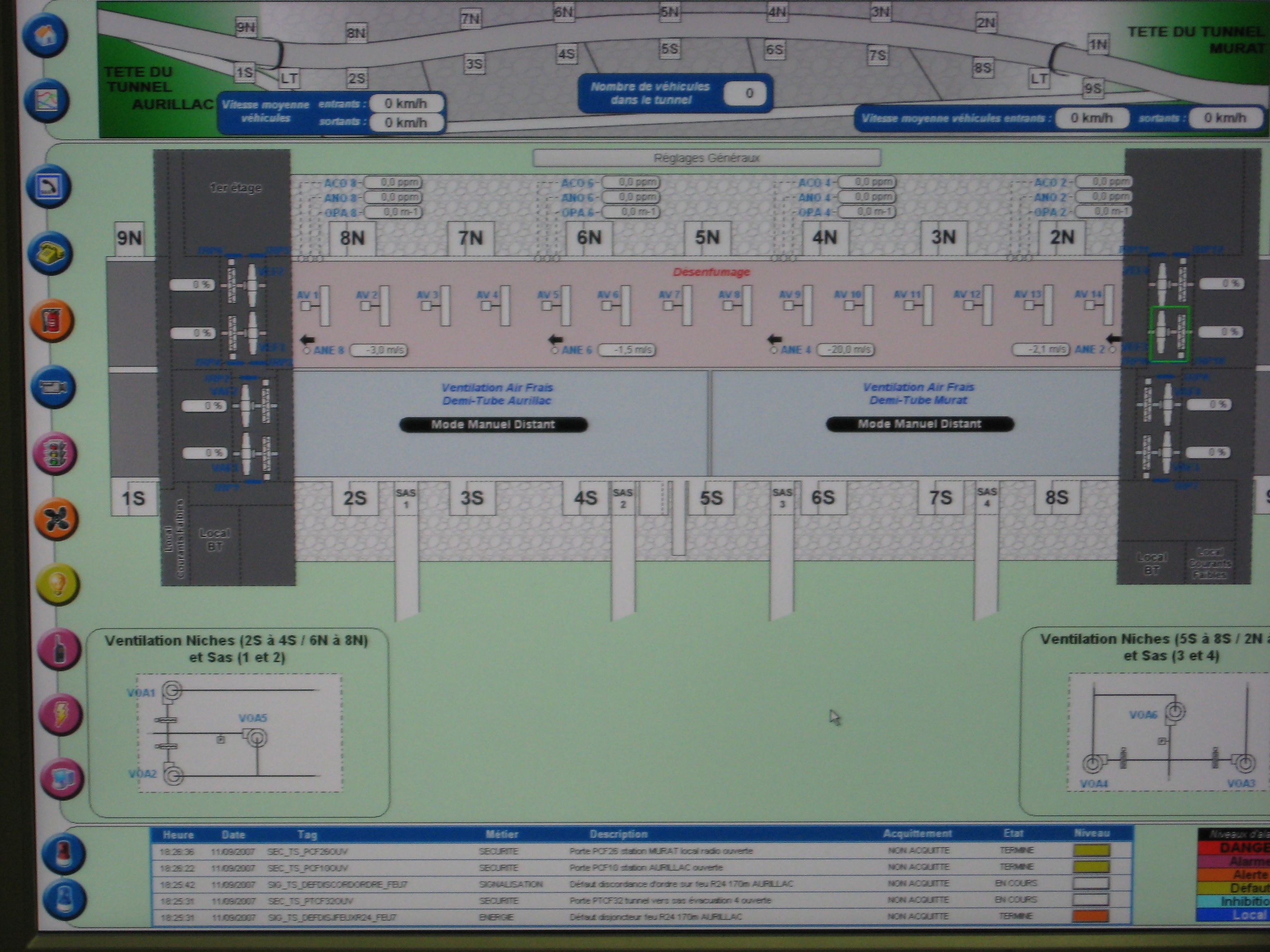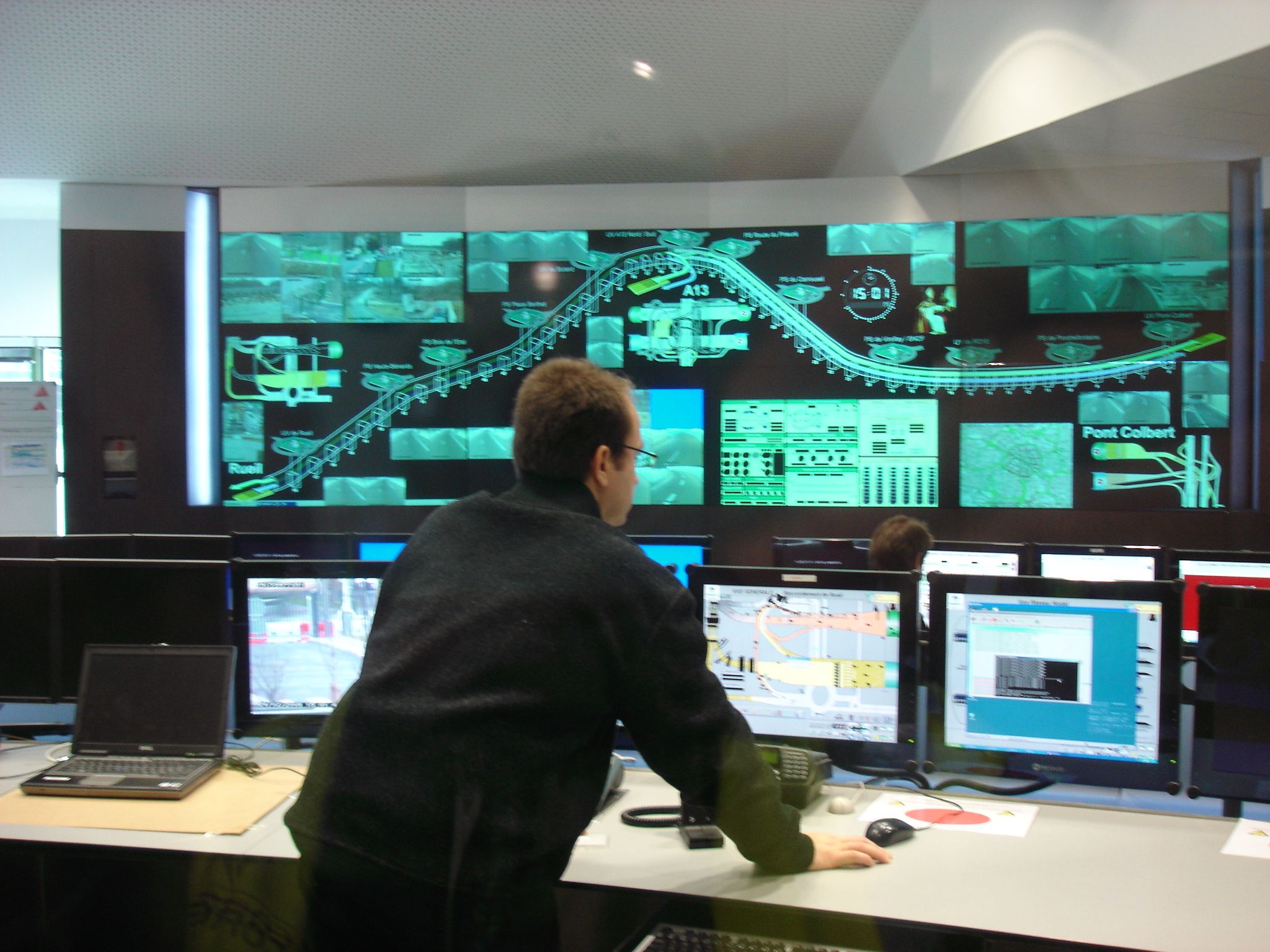
Road Tunnels Manual

Road Tunnels Manual
 In a road tunnel, the equipment plays a vital role for the safety of users. The operator therefore has to monitor such equipment continuously to determine its status (operational or faulty) and/or its operating mode (automatic, manual or stopped).
In a road tunnel, the equipment plays a vital role for the safety of users. The operator therefore has to monitor such equipment continuously to determine its status (operational or faulty) and/or its operating mode (automatic, manual or stopped).
Many devices are servo-controlled by sensors and operate automatically (e.g.lighting, ventilation.) according to pre-determined thresholds. Others are activated or deactivated depending on the operating conditions. It is thus useful for the operator to be able to remotely control them (such as signals, variable message signs, barriers, ventilation as fig. 1, lighting, pumps ...).
As the equipment may be operated very differently (continuously, occasionally, or very rarely), it is necessary for the operator to have information on the operational duration (hour used) of each item.
 Surveillance, control-command and data archiving are very often performed by a single system: the Supervisory Control And Data Acquisition system (SCADA): see Fig.2
Surveillance, control-command and data archiving are very often performed by a single system: the Supervisory Control And Data Acquisition system (SCADA): see Fig.2
Several SCADA systems are available worldwide and their performance is being improved constantly. The systems installed in road tunnels of comparable characteristics are therefore rarely completely identical, even for the tunnels belonging to the same operator. Even so, the architectures follow certain rules that are widely prevalent:
With the development of internet and connected devices, SCADA are becoming increasingly vulnerable to cyber attacks. As they are the core of the safety process, efforts must be made to protecting them from this new threat.